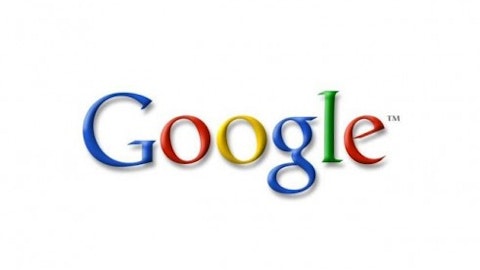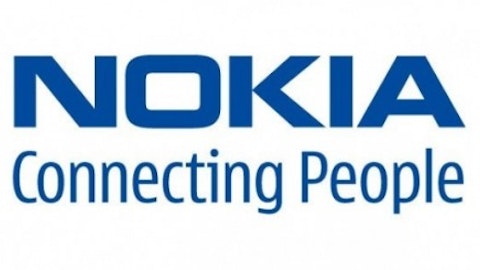Depending on the day, Pandora Media Inc (NYSE:P)‘s shareholders have felt either Sweet Emotion or an Appetite for Destruction.
The company’s stock has been on a rollercoaster during the past year, from a low of $7 to a high of $15. Bulls and bears tend to point fingers at different drivers to explain this extreme volatility:
1). The Bulls tend to focus on the incredible adoption of the Pandora service. In December, Pandora reported a 60% increase in revenue, driven by a 67% year-over-year increase in listener hours. Pandora streamed a total of 3.6 billion hours in just the past three months. That’s the equivalent of putting Stairway to Heaven on repeat for 27 billion times, which would run over the next 406 millennia (sorry, couldn’t help it). Pandora streams a LOT of listener hours.

Much discussion has arisen about whether Pandora has any true staying power. Sure, they came up with a creative idea and have grabbed a lot of popularity. But are they just going to bow out as the opening act when a large competitor like Apple Inc. (NASDAQ:AAPL) or Spotify takes the stage? After all, Apple already launched its iTunes Genius service, which recommends songs to you based on what is saved in your iTunes account. With many users already a part of the Apple ecosystem, it’s a compelling argument that more could turn to Genius.
And Spotify allows users to immediately add songs to Playlists and showcase them via Facebook Inc (NASDAQ:FB). Some of these competitors are big companies that could be really intimidating.
Dream On?
To determine whether Pandora can hold their own, we can run the company through a thorough Competitive Analysis. In this, we should analyze four distinct categories, with particular company-specific attributes to look for in each:
1) Intangibles – Brand recognition, Patents, Leadership and Vision, Culture
2) Stickiness – Recurring/Habit Forming, High Switching Costs, Distribution Network
3) Customer Experience – Network Effect, Word-of-Mouth Advertising, NPS Positive
4) Cost Advantage – Resource Location, Process/Scale
We can then award points for advantages in any of the sub-components, for a total possible score of 12 points. We can consider a company that scores at least 3 points to have a competitive advantage, and at least 5 points to have a strong competitive advantage.
Intangibles
Pandora’s very essence is built upon the Music Genome Project, which the company describes aptly on their website:
“Pandora is based on the Music Genome Project, the most sophisticated taxonomy of musical information ever collected. It represents over ten years of analysis by our trained team of musicologists, and spans everything from this past Tuesday’s new releases all the way back to the Renaissance and Classical music. Each song in the Music Genome Project is analyzed using up to 450 distinct musical characteristics by a trained music analyst. These attributes capture not only the musical identity of a song, but also the many significant qualities that are relevant to understanding the musical preferences of listeners.”
It’s very clear that there is a source of competitive advantage in this. The MGP took a decade of work and employed some very highly trained music analysts. That’s something that’s not easily replicated. The vision of the company to dedicate this amount of work and time upfront should pay off for them down the line.
Speaking of investment, Pandora founder Tim Westergren said in the company’s early days they were once down to $25,000 in cash and had once considered (only half-jokingly) just going to Vegas and putting it all on black. Not long after that moment, they received a cash infusion from a corporate investor, which brought much-needed funds for the company to continue operations. With the newly acquired money, Westerngren made a decision that may have been somewhat unpopular to many investors. He decided to back-pay salaries to employees for the past several years of their work. Said another way, many Pandora employees had been working for years without collecting salaries. That commitment to the cause catches my attention as a strong company culture.
Although most consumers recognize the blue Pandora logo and are familiar with the company’s brand, it is doubtful that they make this a buying decision. The majority of Pandora’s revenues come from internet advertising that cares mostly about page hits and eyeballs.
The Music Genome Project is covered by US Patent Number 7,003,515. But this isn’t enough to really lock competitors out. They’ll still find a way to create a similar offering, and Pandora doesn’t have an exceptionally strong patent portfolio.
Pandora scores 2 of 4 points for Intangibles – one for Leadership and Vision and one for Culture.
Stickiness
As briefly mentioned above, the competitors have similar offerings to Pandora. Apple has launched Genius and is working out the details of their own form of internet radio. Spotify allows users to assign songs to Playlists that can be stored in the cloud and played at any time. Both rely on users paying for content (Apple in the form of per-song download costs and Spotify in the form of monthly subscriptions) and are relatively low-cost. Switching costs are non-existent and there is no distribution network that can lock out competitors.
However, there is an element of Pandora that is habit-forming. The website allows you to ‘thumbs-up’ songs that you like from its recommendations. With time, Pandora learns more about you and can improve its recommendations. This is an incentive for users to come back. The more data you give it, the more likely the songs it recommends will be in-line with what you like.
Pandora scores 1 of 3 points for Stickiness – one for Recurring/Habit Forming.
Customer Experience
Overall, customer experience is very positive. Pandora’s business model is notably different than that of Apple’s iTunes Genius. Pandora offers paid subscriptions, but the majority of its revenue comes from advertising (premium subscriptions cost $39 annually and is advertisement-free; they were up 52% year-over-year in 3Q’12 but still totaled only $13.7 million of $120 million total 3Q revenue). Conversely, Apple makes money off of Genius by recommending songs for users to download off of iTunes that are similar to the others in their library.
I give the advantage to Pandora in this respect. Though pop-up ads and commercials are unquestionably annoying, there is an aspect of them being ‘hidden’ moneymakers that are not as direct to users. Users can listen to playlists all day on Pandora for not a dime, whereas Genius would only allow you to access its new recommendations if you were to purchase them off of the iTunes stores (typical costs are $0.99 – $1.29 per song). In this respect, users enjoy the experience more and the Net Promoter Score is largely positive.
Pandora has also recently launched the version 4.0 of their site. Largely geared for mobile, it greatly improves on the sharing aspect. Once set up, users are able to share the songs they listen to by embedding with their Facebook or Twitter profile. They can also email them to others or even create a profile.
I feel that this is key to the company building out the network effect of the user experience. Integrating into social media is the direction that Spotify has successfully gone. However, these features in Pandora 4.0 are still relatively new. It remains to be seen if this truly gives them a competitive advantage utilizing the Network Effect, though they’re on the right track.
Pandora scores one of three points for Customer Experience: one for NPS Positive.
Cost Advantage
Sorry, but not here. Pandora must pay royalties for every song that it streams. Effectively, the royalties are a scale-killer: there’s no cost advantage to Pandora for getting bigger. The company displays “Are You Still There” prompts to users after extended periods of listening, to ensure the continued streaming isn’t wasting money. This can be irksome for the user experience, especially when at parties.
Streaming costs do not decrease with higher volumes. The nature of the per-song royalty costs are even reportedly keeping Apple at bay from their internet radio project.
Pandora scores zero points for Cost Advantage.
The Results
Pencils down! Let’s see how Pandora stacks up in their Competitive Advantage:
| Category | Points Awarded/Possible |
| Intangibles | 2/4 |
| Stickiness | 1/3 |
| Experience | 1/3 |
| Cost | 0/2 |
| Total | 4/12 |
Tallying up 4 points, there are clear signs of a Pandora Competitive Advantage. The vision of the Music Genome Project, coupled with an enjoyable and somewhat habit-forming experience should keep users to continue to stream music over their website. The company is still at the mercy of the cost of content royalties, but they also have an opportunity to be the ‘go-to’ music experience by embedding into social networks.
Bottom line? There’s a lot to like in Pandora’s box.
Other Competitive Analysis Articles:
3). Facebook (FB)
The article Does Pandora Have a Competitive Advantage? originally appeared on Fool.com and is written by Simon Erickson.
Copyright © 1995 – 2013 The Motley Fool, LLC. All rights reserved. The Motley Fool has a disclosure policy.





